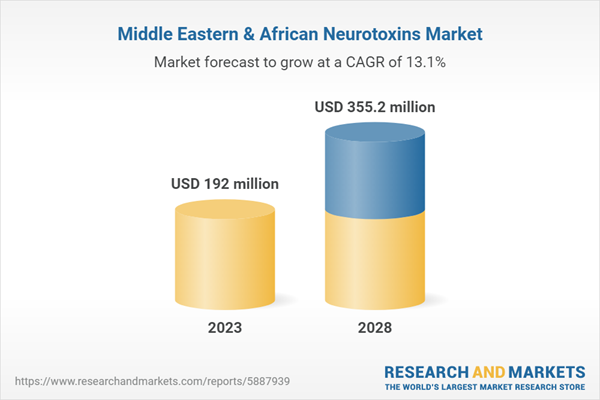BOTA for Assisted Reproductive Technology Fuels Middle East & Africa Neurotoxins Market
Despite numerous advancements in the field of assisted reproductive technology (ART), a significant number of patients still suffer from repeated implantation failure. For example, adequate endometrial growth plays a crucial role in embryo implantation and continuation of pregnancy in an ART procedure. Since several years, BOTA has been widely used in clinics for purposes such as plastic and aesthetic surgeries; it has been revealed that BOTA has a positive influence on the re-epithelialization of human keratinocytes and angiogenesis of endothelial cells. For example, the therapeutic impact of BOTA administration on the pathophysiology aspects recovers the structure and functionality of the thin endometrium. Therefore, clinical results revealed that BOTA administration recovers the damaged structure and impaired function of the thin endometrium by increasing cellular proliferation and vessel formation, reducing collagen-accumulated lesions, and ultimately successful embryo implantation. Thus, the increasing application of BOTA in ART procedures is likely to catalyze the growth of the Middle East & Africa neurotoxin market in the forthcoming years.Middle East & Africa Neurotoxins Market Overview
The neurotoxin market in the Middle East & Africa is segmented into Saudi Arabia, the UAE, South Africa, and the Rest of Middle East & Africa. The increasing incidences of chronic diseases and burn injuries, growing developments by market players, and rising product launches and initiatives for neurotoxin are driving the market growth in the region. Also, the growing home health care is vitally contributing to the market's growth in the region. According to the American Society of Plastic Surgeons, in 2020, 4% of Africans underwent cosmetic minimally invasive procedures for Botulinum toxin type A. Botulinum toxin is a nerve toxin that causes muscle relaxation. In South Africa, it is registered for treating severe eyelid spasms and spastic foot deformities. Cosmetically, it removes facial wrinkles by paralyzing muscles under the skin. Botox is the most popular treatment in South Africa but is also one of the most expensive. Botox prices at clinics vary widely depending on where you live and what type of treatment you’re getting, but an average Botox cost in South Africa would be approximately R3200 to R3500 per area treated. Several factors determine the cost of Botox in South Africa. The most important factor is location.Middle East & Africa Neurotoxins Market Revenue and Forecast to 2028 (US$ Million)
Middle East & Africa Neurotoxins Market Segmentation
The Middle East & Africa neurotoxins market is segmented into product type, application, end user, and country.Based on product type, the Middle East & Africa neurotoxins market is subsegmented into botox, dysport, xenomin, and others. The botox segment registered the largest market share in 2023.
Based on application, the Middle East & Africa neurotoxins market is segmented into therapeutic and aesthetic. The therapeutic segment held a larger market share in 2023.
Based on end user, the Middle East & Africa neurotoxins market is segmented into hospitals, specialty clinics, dermatology clinics, and others. The hospitals segment held the largest market share in 2023.
Based on country, the Middle East & Africa neurotoxins market is segmented into Saudi Arabia, the UAE, South Africa, and the Rest of Middle East & Africa. Saudi Arabia dominated the market share in 2023.
AbbVie Inc, Hugel Inc, Ipsen SA, Medytox Inc, and Merz Pharma GmbH & Co KGaA are among the leading companies operating in the Middle East & Africa neurotoxins market.
Table of Contents
Companies Mentioned
- AbbVie Inc
- Hugel Inc
- Ipsen SA
- Medytox Inc
- Merz Pharma GmbH & Co KGaA
Table Information
| Report Attribute | Details |
|---|---|
| No. of Pages | 105 |
| Published | July 2023 |
| Forecast Period | 2023 - 2028 |
| Estimated Market Value ( USD | $ 192 million |
| Forecasted Market Value ( USD | $ 355.2 million |
| Compound Annual Growth Rate | 13.1% |
| Regions Covered | Africa, Middle East |
| No. of Companies Mentioned | 5 |









